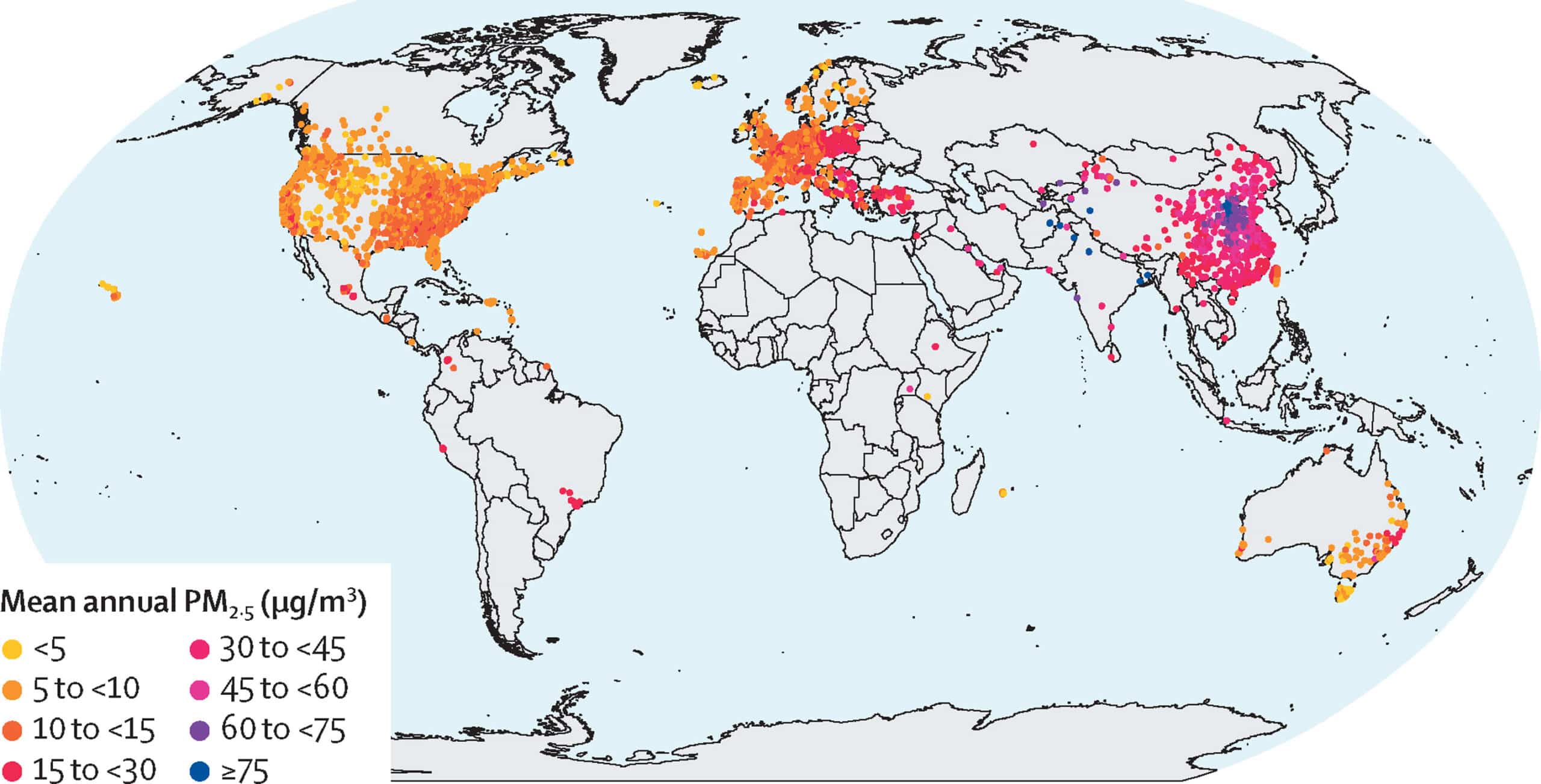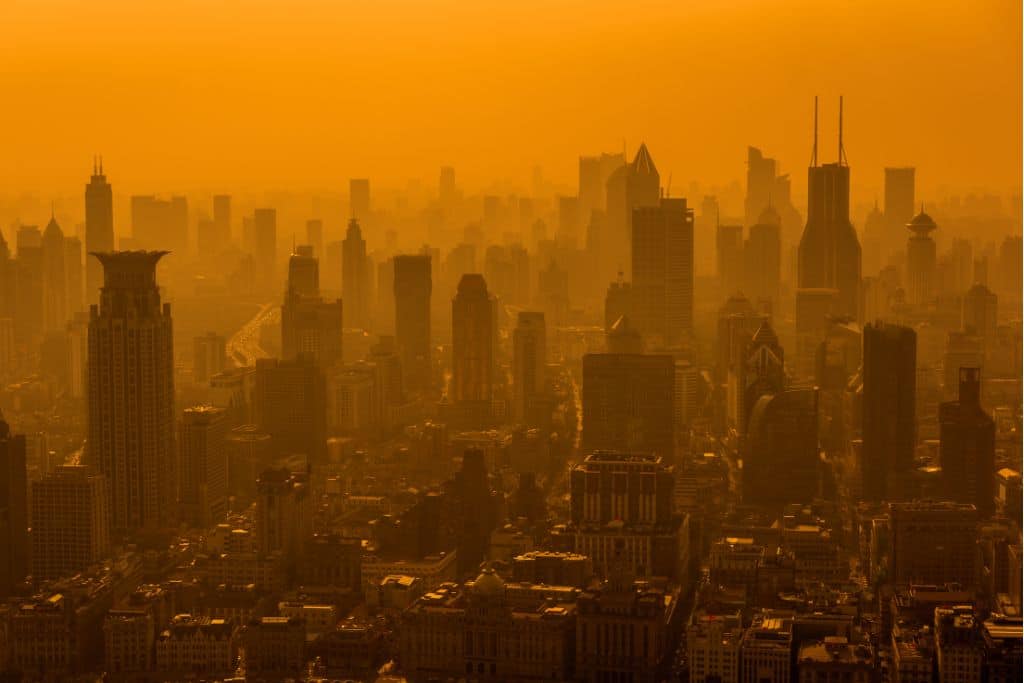Researchers found that daily air pollution levels globally exceed 15 μg/m3 – the safe threshold value recommended by the World Health Organization – for more than 70% of days in 2019.
—
Air pollution levels exceed safe values set by the World Health Organization (WHO) almost everywhere in the world, a new study has revealed.
Modern studies related to air quality focus on a pollutant known as particulate matter (PM). The term refers to the sum of all solid and liquid particles suspended in the air of different sizes and it is considered the main contributor to human health effects by some margin. The most commonly used unit in air quality measurements is PM2.5, which refers to an atmospheric particulate matter that has a diameter of less than 2.5 micrometers (or about 3% of the diameter of a human hair) and is said to pose the greatest risk to human health.
In 2021, the WHO updated its air quality guidelines for the first time in 15 years, setting the 24-hour PM2.5 safe limit at 15 μg/m3 and the annual threshold at 5 μg/m3.
According to the new study, conducted by scientists in Australia and China and published Monday in Lancet Planetary Health, just about 30% of days in 2019 had daily concentrations of PM2.5 lower than 15 μg/m3. Moreover, researchers found that about 0.18% of the global land area and only 0.001% of the world’s population had an annual exposure to PM2.5 below the safe threshold of 5 μg/m3.
Eastern and Southern Asia were the regions with the highest air pollution levels, followed by Northern Africa. At the other side of the spectrum are Australia and New Zealand, followed by other regions in Oceania and South America. Here, PM2.5 concentrations are the lowest, though they experienced an increase in air pollution levels over the past two decades, driven partly by intensified and prolonged wildfire seasons. Stricter regulations led instead to a decrease in pollutants in Europe and North America over the same period.

Global monitor station distribution and mean annual PM2·5 concentration over two decades (2000–19).
You might also like: Air Pollution: Have We Reached the Point of No Return?
Among the biggest contributors of air pollution are fossil fuels. Global demand for oil, natural gas, and coal continues to increase despite calls to end our dependence on these energy sources in order to meet net-zero emissions targets. According to an International Energy Agency (IEA) report published last week, global energy-related CO2 emissions rose by 0.9% in 2022, reaching a new all-time high despite a much slower growth rate than the previous year.
Another driver of air pollution is ozone, a toxic gas that turns into smog – an extremely harmful form of air pollution – when it reaches too close to the ground, significantly reducing visibility. Extreme climate events like dust storms as well as changing weather conditions are also responsible for poisoning the atmosphere. For example, high air pressure and heat waves can create stagnant air where pollutants usually concentrate in large quantities. Extreme heat waves also increase the risks of large-scale wildfires, notorious for releasing more carbon emissions, smog, and pollutants into the air.
Apart from causing millions of premature deaths and illnesses – about 7 million a year according to WHO estimates – there is growing evidence among the scientific community that air pollution can have detrimental impacts on other aspects of human health and well-being – such as on cognitive functions. Several studies have found that polluted air often impedes or lowers the cognitive ability of those frequently exposed to it.
Its environmental effects are also vast and worrying. They range from acid rain – which is extremely harmful to the soil and plants – to birth defects, reproductive failure, and diseases among wildlife animals. Highly polluted rain can also compromise agriculture, as it makes crops more vulnerable to diseases from increased UV radiation caused by ozone depletion.
“I hope our study can change the minds of scientists and policymakers for the daily PM2.5 exposure,” Yuming Guo, the lead researcher and an environmental health professor at Monash University, told Bloomberg.
“Short-term exposure, particularly sudden increase, to PM2.5 has significant health problems. If we can make every day with clean air, of course the long-term exposure of air pollution would be improved.”
You might also like: 10 Facts About Air Pollution That’ll Take Your Breath Away














